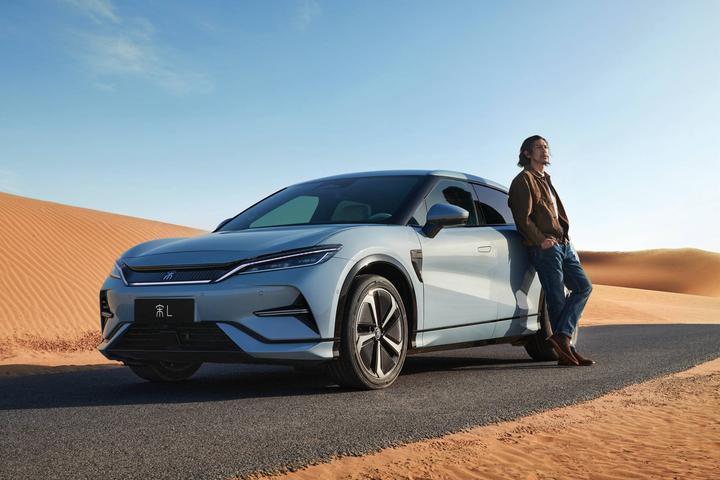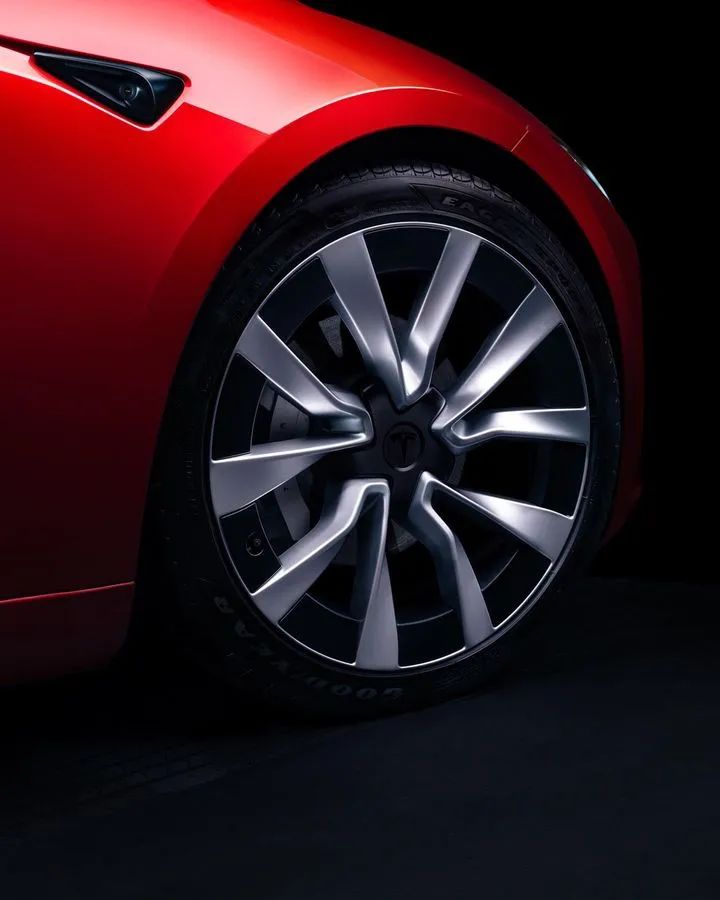Wang Chuanfu's "BYD Dynasty", the "counterattack path" from low to high!

Ten years ago, BYD President Wang Chuanfu boasted: "You can build a Tesla in minutes."
This was the reporter’s answer to Musk when he interviewed Wang Chuanfu in 2013: “BYD sucks.”
Let’s understand first
Part 1: The Legendary Life of Wang Chuanfu
Mencius said, "When Heaven is about to entrust a great responsibilities to this people, they must first work hard on their determination."
Among the many industry leaders who come from so-called poor families, Wang Chuanfu is truly from a poor family. When he was a sophomore in high school, a storm blew down his family's house, leaving him with no door.
When he was 13 years old, his father suffered from liver cancer and passed away after a long period of pain, leaving behind only three dilapidated houses with four walls, a helpless wife and eight children who lost their father early.
Wang Chuanfu faced an extremely cruel start in his life: his sisters got married one after another, his brother dropped out of school to supplement the family income, his little sister was forced to give away her family because she could not support herself, and her mother, who became sick from overwork, collapsed two years later and rushed home to attend the funeral. Wang Chuanfu regretted leaving the technical secondary school because he missed the last two exams...
Perhaps he had seen the most bitter side of the human world, and the subsequent King of Bitterness Chuanfu seemed not to feel it anymore.
In those years, his brother and sister-in-law, who were working in small businesses, squeezed out money from their teeth to support Wang Chuanfu's education. He worked hard and worked hard, and he was the only student in the science class admitted to a key university that year, and became a local favorite. A time-honored legend.
After that, Wang Chuanfu, who didn't believe in fate, kept improving his life. He who studied hard at the beginning and didn't even speak much, became increasingly active and cheerful.
With excellent results, he was recommended to the Beijing Nonferrous Metals Research Institute, stayed in the institute, was promoted to the youngest division-level cadre in the institute, and formed a happy family...
However, just when he was one step away from the scientist's dream, Wang Chuanfu was sent to Shenzhen in 1993 to prepare for the establishment of a nickel-metal hydride battery manufacturing company.
This is the second year after Deng Xiaoping's "Southern Talk". This hot red land is full of vitality, ready to show endless possibilities to those who give it value.
The later story can be summarized in one sentence: Wang Chuanfu, who went into business in the sea, started his business with batteries, and later became famous for building cars. At the age of 43, he successfully climbed to the top of the rich list.
From making batteries, to mobile phone OEM, to copycat and affordable cars, Wang Chuanfu cannot avoid the word "plagiarism", and his use and avoidance of intellectual property rights are also amazing.
Such an image has occupied the minds of users for a long time, and BYD has also caused a lot of controversy and caused great harm to the brand image.
Although such behavior is ridiculed by others, in Wang Chuanfu's view, talking on paper is the most useless. Examples of "standing on the shoulders of giants" have been imitated by the market for a long time, and are even the path that newcomers have to follow.
Facts have proved that Wang Chuanfu is right. Enterprises must first solve their own survival problems before they have the opportunity to talk about innovation. Innovation is not about building a tall building from the ground. It needs to be built on the basis of imitation to be stable.
This year, Wang Chuanfu is 57 years old. From the extremely tragic beginning, the hard work process, and now the glorious achievements, Wang Chuanfu's life is unrepeatable.
Although the controversy he caused deserves our attention, his efforts in solving employment problems for hundreds of thousands of people and solving urban pollution and congestion also deserve our attention. However, the most important thing is his fighting spirit to change his destiny on his own.
Part 2: Once household consumption starts, build a Tesla in minutes!
Wang Chuanfu believed that BYD had the technical ability to build pure electric vehicles for home use. He did not make pure electric vehicles for home use at that time because he believed that "household consumption of pure electric vehicles had not yet started" at that time.
But why didn’t household consumption of pure electric vehicles start in 2013? It’s just these two reasons:
1. The price of electric vehicles is still too expensive compared to fuel vehicles. Although electric vehicles save more money per kilometer by burning electricity than burning oil, if the price of the vehicle is too high, the total cost of ownership will still be much more expensive than that of a fuel vehicle. After all, the number of kilometers traveled by family vehicles per year is limited.
2. In the United States, although most people live in single-family houses and have their own garages, it is very convenient to install charging piles, but there is no place to charge when driving out of the city. As a result, electric vehicles cannot run long distances, which limits the travel range of electric vehicles and reduces users' enthusiasm for purchasing.
These two problems existed in both China and the United States at the time. So how did Wang Chuanfu and Musk solve them?
Musk's idea is simple. Based on first principles, why dismantling electric vehicles is more expensive than fuel vehicles. The conclusion is that everything else is the same, except that the battery is very expensive, even exceeding the price of the vehicle itself. Why are batteries expensive? Because pure electric vehicles require a huge number of batteries, although the unit price of the battery is not expensive, the total price is very expensive. One 18650 battery for a laptop only costs 6 US dollars. A laptop requires 4 to 6 cells, which is 25 ~$35, which is acceptable to consumers. However, an electric car needs to install 7,000 18650 batteries, resulting in photovoltaic cells costing US$40,000, which is unacceptable to consumers.
Musk believes that the reason why batteries are expensive is that the output is too small, which is sufficient for consumer electronics but far from sufficient for vehicle power. As long as production capacity is expanded, battery prices can continue to drop. Therefore, it teamed up with Panasonic to develop the 21700 battery, which is easier to manufacture and lower cost, and designed a smaller, lower-energy-consuming Model 3 electric car that only needs to carry 60% of the power of the Model S, plus Specially built automotive battery factories have significantly expanded their production capacity, resulting in a continued decline in the price of GWh lithium batteries.
Another issue is the need to recharge midway when running long distances. Musk believes that electric vehicles must also be able to go where fuel vehicles can go, and cannot be limited to driving in the city. Therefore, Tesla is required to develop high-power super charging piles and provide them with government assistance. Without help, Tesla spent its own money to invest in, build and operate super charging stations along interstate highways across the United States, building 4 to 12 super charging piles at each charging station.
On the premise of solving the above two problems, Model 3 can be priced at US$35,000. Taking into account the ability to save fuel prices and the excellent performance of the vehicle itself, it can finally compete with the best-selling Japanese family cars in the United States such as Camry and Accord. battle. Pure electric vehicles ushered in the era of family consumption.
Let’s look at Wang Chuanfu again. These two problems also exist in China. What does he think? He believes that public charging piles are similar to gas stations and are not the business scope of car companies. He is not responsible for solving them. But if a family buys a car, it cannot only run in the city and not long distances. Isn’t that no different from the old man’s pleasure? How can it be called a car? So he thought of a way. If he couldn't recharge outside the city, he would refuel. Can't I just install an engine and fuel tank on the car? Electricity is used in the city and oil is used for long distances. What should I do if the battery is expensive? Two tricks: 1. Reduce the cruising range and reduce the amount of batteries installed. When running in the city, 50 kilometers of pure electric range is enough for a day. Wouldn’t it be enough to charge it when you go home every day? 2. Switch to lithium iron phosphate batteries, which are much cheaper than Panasonic's 18650 nickel-cobalt-manganese battery itself because the more expensive metal cobalt is not used.
Therefore, BYD has always been inclined to provide PHEV models in the family car market, from the earliest F3DM to the later Qin DM, 542 Tang, Tang second generation equipped with P0 motor, and the first-speed DHT architecture released in 2000 economical DM model.
BYD's models have always been designed from the bottom up. Compared with the Model 3, a high-performance and high-configuration model, BYD's models have more consideration for the acceptance ability of Chinese consumers. Although a pure electric range of 50 kilometers only requires the installation of a 10-20 kilowatt-hour battery, the battery price was still very expensive at the time. Fortunately, the Chinese government began to provide huge subsidies in 2014, and began to implement license plate restrictions in first- and some second-tier cities. Policy to force household users to purchase new energy vehicles. In addition to Beijing's license restriction policy that only allows the purchase of pure electric vehicles, PHEV plug-in hybrid models can be purchased in other cities with license restrictions. This provides conditions for the implementation of Wang Chuanfu's ideas and lays the policy foundation for BYD's sales.
Of course, the conditions in China and the United States are different. Consumers have different ideas and consumption capabilities. Musk and Wang Chuanfu also have different understandings of cars. Their personalities, family backgrounds, growth experiences, consumption concepts, and entrepreneurial environments are also different.
Musk is from the IT industry. He made a lot of money doing the Internet in his early days. He has a strong understanding of computers and software and has pioneered the intelligentization of automobiles. In the United States, which has a first-class financing environment, it obtained a large amount of investment by creating the concept of Internet-based car manufacturing, and then formulated a plan of "starting with a small number of high-end electric sports cars to test the water, and then moving to medium-volume luxury and large electric cars to create a sense of technology and brand image, and finally A large number of economical cars are sold to ordinary families to realize the clean energy of alternative fuel vehicles." The three-step route from high to low will achieve the sustainable development of the electric vehicle business by gradually expanding sales, reducing costs, and further expanding the positive cycle of sales. .
Wang Chuanfu was born in the electrochemistry industry. He made a lot of money in the mobile phone battery business in his early days and has a very strong understanding of batteries. Wang Chuanfu's family was not rich when he was a child. He relied on his diligence and intelligence to get into key universities and graduate schools. After making money by making mobile phones, he still maintained a low-key style and lived frugally. Foreign luxury cars are sold at high prices in China and are also affected by consumption. He sneered at the attitude of followers. Therefore, we chose to start by satisfying the low-end market that foreign car companies did not pay attention to. In an era when new energy technology was not mature enough and costs were too high, we started with low-end fuel vehicles, just like Chery and Geely did at the same time. First occupy the market, make money, and then slowly develop new energy vehicle technology.
Why doesn't Musk make PHEV hybrid cars to reduce costs? Because Musk believes that hybrid power still needs to burn oil and cannot achieve completely zero emissions. Moreover, the two power systems are coupled together, which is highly complex and difficult to reduce costs. Musk believes that pure electric vehicles are the ultimate form of automobiles, so there is no need to take an intermediate transition route, and efforts should be made towards this ultimate goal. If the cost cannot be reduced to the bottom immediately, then we should first produce pure electric vehicles for wealthy people with spending power, let them buy and experience them first, build a reputation, and expand production.
Why doesn’t Wang Chuanfu follow Tesla’s route? Because the market Wang Chuanfu relied on was China, which had a poor financing environment, BYD made money by making batteries and going public. However, as soon as shareholders heard that Wang Chuanfu was going to switch to car manufacturing, they all advised him to stop immediately. In 2003, Wang Chuanfu announced that he would build a car, and he could only rely on the funds he accumulated through recycling. It was completely incomparable to Wei Xiaoli's tens of billions of venture capital funds to build a car after 2016. Therefore, Wang Chuanfu, like Li Shufu, can only start from a low-end car worth tens of thousands of yuan, starting from a market that joint venture car companies look down on. Enter this industry first, then gradually grow and expand, first imitate the best-selling Japanese cars, and then modify the design yourself. Under this circumstance, the low-end brand image of BYD's fuel vehicles has also been engraved in the minds of all Chinese people. They can no longer build electric vehicles from high to low like Tesla does, because BYD has already carried the brand from the beginning. Low quality and low price brand image.
In 2013, BYD has been making cars for ten years. The fuel vehicle business has also gone through a series of processes including the F3 explosion - problems - sales decline - and reputation repair. At the same time, the development of electric vehicles has also gone through the first generation of early adopters and... It failed and started the development of the second generation (Qin DM). Wang Chuanfu believes that the reason why the F3DM is not selling well is because the cost and price of the car are too high, which makes it lose the meaning of fuel economy for consumers, and its performance is also mediocre. Therefore, the research and development goal of the second-generation PHEV was changed to: since the price cannot be lowered for a while, then the performance should be improved, and the series architecture of F3DM was changed to the parallel architecture of Qin DM, using the high torque characteristics of the motor, together with the gasoline engine By exerting force, Qin DM's acceleration time to 100 kilometers is reduced to 5.9 seconds. As soon as this indicator came out, it shocked the industry. Domestic cars have never achieved this performance, and even joint venture cars worth hundreds of thousands or more than two hundred thousand yuan cannot achieve this performance. The first users of Qin DM are most proud of the fact that as soon as the green light turns on at the intersection, the car's floor oil instantly overtakes the joint venture car waiting for the light and even the taillights cannot be seen. Of course, because the chassis is still a copycat of the Japanese Corolla, and its sports performance is insufficient, it has been nicknamed "King in straight lines, dead in corners" by fans of joint venture cars. Of course Wang Chuanfu knew the gap in the chassis, but there was nothing he could do. On the one hand, redesigning the chassis would require huge expenses. The company had no money and no one who understood chassis design and tuning. On the other hand, sports chassis and advanced suspension also require higher parts costs. BYD's brand image cannot support the higher vehicle selling price, so it cannot cover this cost. So I can only compete with others for straight-line acceleration. The Tang DM and 542 technology launched in 2015 brought the performance to the peak. The introduction of electric four-wheel drive breaks the patent monopoly of traditional fuel-powered four-wheel drive differential locks of joint venture car companies for the first time. The research and development of these technologies enabled BYD to attract a large number of national fans at that time. I was fortunate to be one of them and witnessed BYD's daring to think, do and innovate boldly.
Of course, later, the inherent flaws of the 542 parallel technology were discovered by car owners who were early adopters. With electricity, they are like dragons, but without electricity (relying on the engine), they are like worms. When the engine is turned on without electricity, the NVH quality drops sharply, and with the addition of dual-clutch The unevenness of the gearbox and the frequent charging and discharging of small-capacity batteries resulted in a significant shortening of battery life, resulting in many quality problems. Due to financial considerations, BYD also failed to handle quality complaints from consumers, resulting in a large number of customer complaints, which led to the decline in 542's technical reputation. Beginning in 2016, in order to solve the problem of battery loss without reducing performance (the goal of 542 was still guaranteed at that time), the third generation DM technology added a P0 motor (starter motor) to participate in power generation, so that the engine can still run at low speed after power feeding. Charging the large battery through the P0 motor will prevent the battery from being damaged after the battery is completely discharged. However, it does not solve the problem of uneven dual-clutch gearbox and sudden drop in NVH quality after running out of power. In response to these two problems, the fourth generation DM technology was developed in 2018. It returned to the F3DM architecture, abandoned the dual-clutch gearbox, and changed to a pure series extended-range pure electric drive architecture at low speeds. In addition, it has a strong support for lithium iron phosphate battery CTP. Improvements in technology and long blade cell packaging technology have reduced the cost of lithium iron phosphate batteries a lot. The cost of PHEV models has been significantly reduced compared to 5 to 6 years ago. After taking into account national subsidies and purchase tax subsidies, it is already possible to compete with fuel vehicles on fuel prices.
It can be seen that BYD has consistently solved various problems of PHEV models between 2010 and 2020, and has improved four generations of technology. What about EV models? There are not many improvements in EV models. At this stage, the main focus is on replacing oil with electricity. The main focus is on economical models, targeting the taxi market. Because taxis have huge annual mileage, after electricity replaces oil, the price difference between oil and electricity can smooth out the huge cost of batteries. , coupled with the huge policy subsidies provided by the state (the e5 only sold for 140,000 after the national subsidy of 320,000 + local subsidies), the electrification of taxis was successfully launched.
So in 2013, when a reporter asked Wang Chuanfu if BYD could build a pure electric car for home use as good as Tesla, Wang Chuanfu made an astonishing statement: "Once household consumption starts, BYD can build a Tesla in minutes." It may be that In Wang Chuanfu’s eyes, it is not difficult to design a pure electric vehicle for families.
It will be after 2020 that BYD really starts manufacturing pure electric vehicles for home use. It was also after the popularity of Han EV that Wang Chuanfu believed that "family consumption has started." The first pure electric vehicle for home use was Dolphin, and soon the second one was launched. Two models of the Yuan Plus were also released, and both achieved best-selling results. BYD's confidence also greatly increased, and then the third model of the Seal - regarded as the "Model 3 made by BYD" - also came out soon. In 2023, the fourth Seagull and the fifth Hiace (Model Y made by BYD) have been launched, and sales are also good.
Tesla is working from high to low, and what it has to do is to continuously launch low-priced models and expand sales - the legendary Model 2. BYD is working from low to high, and what it has to do is to continuously launch high-priced models and enhance its brand image - this is the case for Denza and YangWang.
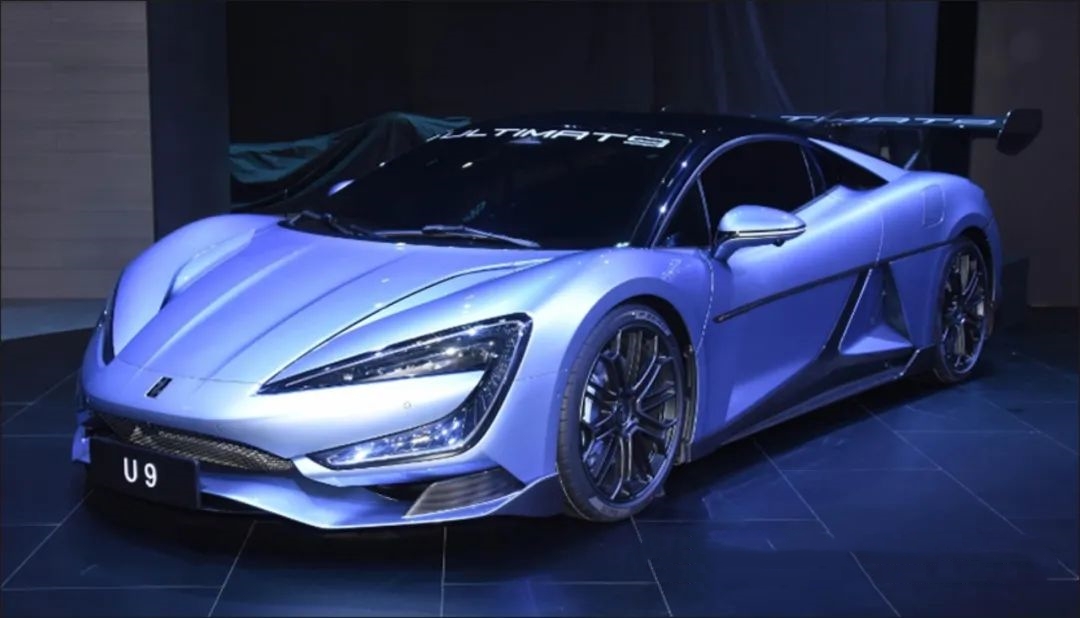
Part 3: BYD, the light of technology illuminates the future!
On December 6, TSMC founder Zhang Zhongmou lamented at a ceremony for the first equipment to enter the factory in Phoenix, Arizona, "Twenty-seven years have passed, and the world is very different from back then. Globalization is close to death, and free trade is about to disappear. ".
Three days later, at the Global Investment Conference in Shenzhen, Wang Chuanfu announced that “the industrial output value in Shenzhen has increased by 96% year-on-year since the beginning of this year.” The joys and sorrows of the world are not the same. In Wang Chuanfu's heart, he does not feel strongly that globalization is dying.
Because BYD is even a beneficiary of some kind of anti-globalization trend.
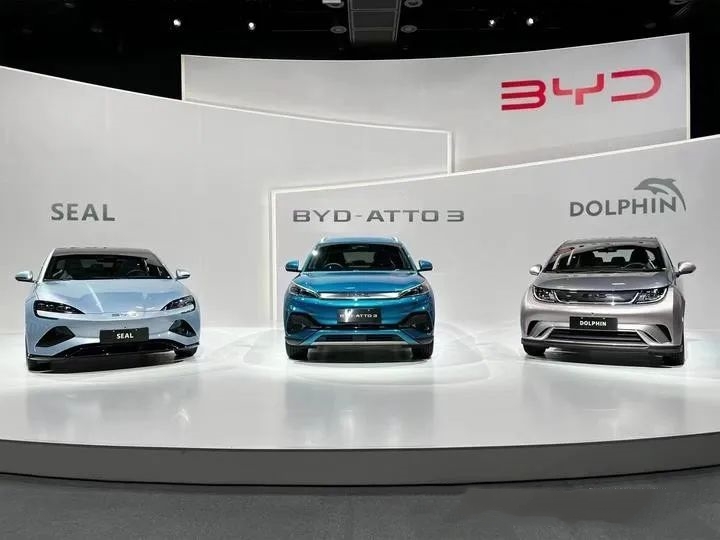
BYD's rise in the past two years has been driven by two rocket-like forces. One is the core shortage wave sweeping the world. BYD has been criticized for its excessive costs in the past, and its inefficient vertical integration model suddenly has strong vitality, ensuring that Delivery to Users. Wang Chuanfu personally admitted to the media, "We have been relatively little affected."
The other is the high oil price plateau period after the Russia-Ukraine war, which greatly changed user preferences. The penetration rate of new energy in the Chinese market increased sharply, pushing a large number of users who were not ready to buy new energy models to BYD.
BYD's success is an atavism, adopting the common model of car companies before globalization. The major car giants at that time, such as General Motors and Ford, had a wide range of operations, from rubber plantations for tires, to mines that were the source of various metal parts, to exquisite leather goods for interiors, and to financial companies that supported users' installment purchase needs. Everything is included. However, with the arrival of the wave of globalization, the industrial chain has been continuously migrated from the inside of the car company to the outside, greatly increasing the length of the industrial chain and reducing the cost of the car company.
The Toyota production method, widely adopted by global car companies, pursues zero inventory of parts. It is best not to stay on Toyota's production line for a second for the parts needed for vehicle assembly. The time between procurement and delivery The shorter the better. Taiichi Ohno, the former president of Toyota Motor, explained that the principle of Toyota Production System "just in time" is to "get the required items at the required time and in the required quantity."
In the past four decades, from Wedekind to Ghosn, the ambitious plans of every car company leader are nothing more than to reduce costs and increase production efficiency. In essence, they are all learning from Toyota and doing outsourcing.
Today, whether it is Volkswagen Toyota or BBA, they no longer have much technology stack in their hands. They are more about integrating the industrial chain, judging supplier technology, and providing it to users after integration.
This gives BYD a huge opportunity to surpass them, which is to fully self-research core technologies.
Therefore, at last week's BYD YangWang launch conference, the Yi Sifang platform with four independent motors shocked many viewers. BYD has already had a prototype of this technology nearly twenty years ago. By controlling the four wheels with separate motors, it changes the layout of the front and rear axles in the past, thus enabling four-wheel independent vector control without any restrictions. For traditional structures such as differentials and drive shafts.
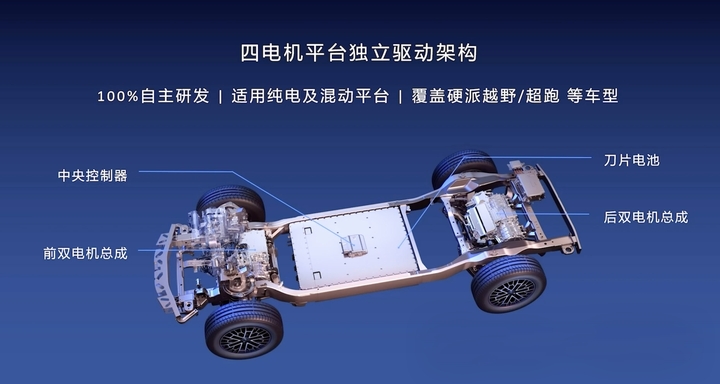
The independent power output of each wheel also gives us more imagination. Not only can it switch between front-wheel drive, rear-wheel drive, and four-wheel drive according to the driving scene, but theoretically it can even increase or decrease through the positive and negative torque. , achieving more delicate adjustments in control, off-roading, and energy consumption.

On this basis, the power response will also be further improved, and through the first integrated design of the motor electronic control box and a new generation of SiC, the 220-240kW system power and 320-420Nm power of a single motor can be released with higher efficiency. The maximum speed exceeds 20,000 rpm, the vehicle's horsepower exceeds 1,100 horses, and the efficiency is as high as 97.7%. In terms of power, it is not inferior to the Tesla Model S/X Plaid and Lucid Air Sapphire, which are on the power ceiling of electric vehicles. Even with such a square shape with a length of more than 5 meters and a width of more than 2 meters, it still has a 3-second level. 100 kilometers acceleration performance.
At the same time, Yi Sifang can also rely on motors to monitor wheel status more accurately. Compared with traditional wheel speed sensors, it has more than 300 times the sensing accuracy and 20 times the adjustment speed of vehicle status. With the electronic and electrical architecture of the central computing platform and distributed controllers working together, the system has stronger control over the body posture and stability. The dual redundancy of the braking system and steering system also further improves the safety of the vehicle. Now even if you have high-speed tires, you can drive at a speed of 120km/h.
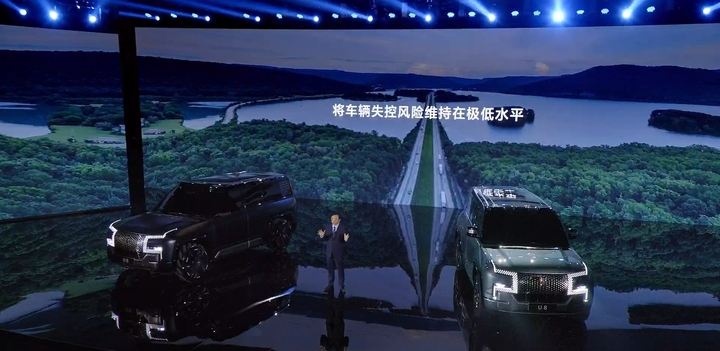
Wang Chuanfu said at the scene, "Safety is the greatest luxury of electric vehicles."
Many years ago, he once said, "This is the charm of electronics. Do you need a spare tire? You don't need a spare tire. If you drive this car out and the fucking front wheel blows out, you can just remove it and throw it away." .
At that time, it caused ridicule from many people, but today, everyone seems to be a little moved. This is consistent persistence on the technical route. So on the day the YangWang brand was launched, many BYD people in their circle of friends felt like their dream had come true, "We can finally make a million-dollar luxury car."
With the launch of the YangWang product line, BYD has built a product matrix including "Ocean + Dynasty + Denshi + YangWang", covering the price market from less than 100,000 to one million. It can be said that BYD has the widest coverage of the current price consumption range. car brand.
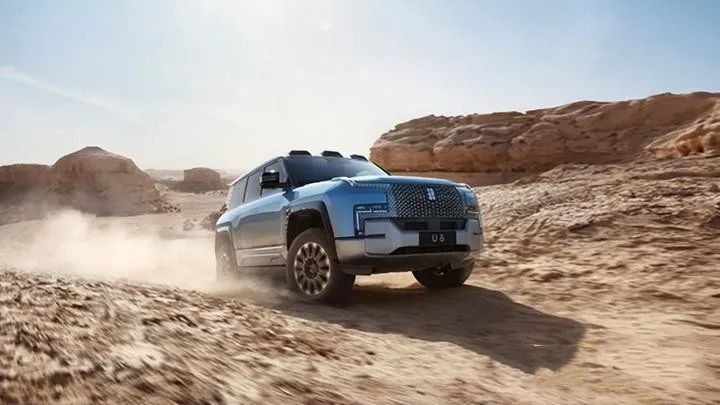
But we cannot expect that BYD will immediately succeed in sales if it launches a product like YangWang. Users' pursuit of Range Rover and Porsche will continue to be inertia for a long time. Before 2020, BYD's annual sales had been hovering at 400,000 units for a long time, until the recent epidemic hit the market at the right time.
But the main value of "YangWang" should be to demonstrate technical reserves and enhance brand value. Through the "YangWang" sci-fi version of the product concept conference, the "Yi Sifang" technology is fully demonstrated and comprehensively reconstructed around the characteristics of new energy vehicles from the three dimensions of perception, decision-making and execution, while allowing more consumers to appreciate BYD's technology. Bring qualitative improvement.
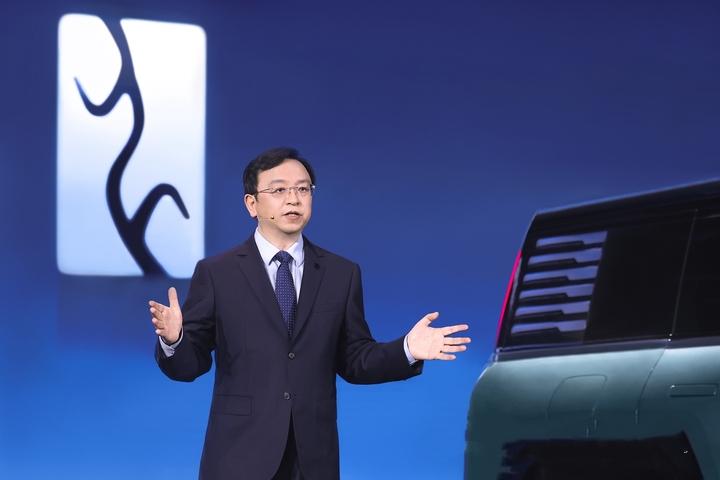
According to the financial reports released by BYD and Tesla, in the first three quarters of last year, BYD's net profit was 9.311 billion yuan, while Tesla's net profit during the same period was as high as 8.869 billion US dollars (approximately RMB 60.8 billion). BYD's profit The level is about 15% of Tesla's. Obviously, compared to cultivating affordable models with smaller profit margins, BYD needs to make more achievements in the mid-to-high-end market. Therefore, the positioning of U8 and U9 is somewhat similar to Model S/X, the two million-dollar luxury cars that Tesla pioneered in the global market.
It is worth mentioning that in the past 2022, BYD has officially announced price increases four times.
In general, BYD's high-end road is not like the Geely Group, which absorbs Volvo through acquisition and integration and rearranges its product line. It is not like Great Wall, which follows and imitates international first-tier car companies, sticks to core technologies, and creates products with the ultimate price/performance ratio. Instead, we need to find another technical path to seize the commanding heights of the topic. This is destined to be a more difficult and controversial path...
Part 4: Ten Years Later
1. BYD’s sales volume exceeded 3 million, making history as the “strongest sales leader on earth”
In the past year of 2023, BYD's sales have shown a "surge" trend. According to data, BYD sold 341,043 vehicles in December, a year-on-year increase of 45%, and sold 3,024,417 vehicles for the whole year, a year-on-year increase of 61.8%. So far, BYD's annual sales have exceeded the target of 3 million vehicles set at the beginning of the year, not only winning the annual sales crown of China's automobiles, but also the global sales crown of new energy vehicles. At the same time, the annual sales volume of 3 million also set a record for Chinese cars. BYD, which has been out of the spotlight, has once again made history.
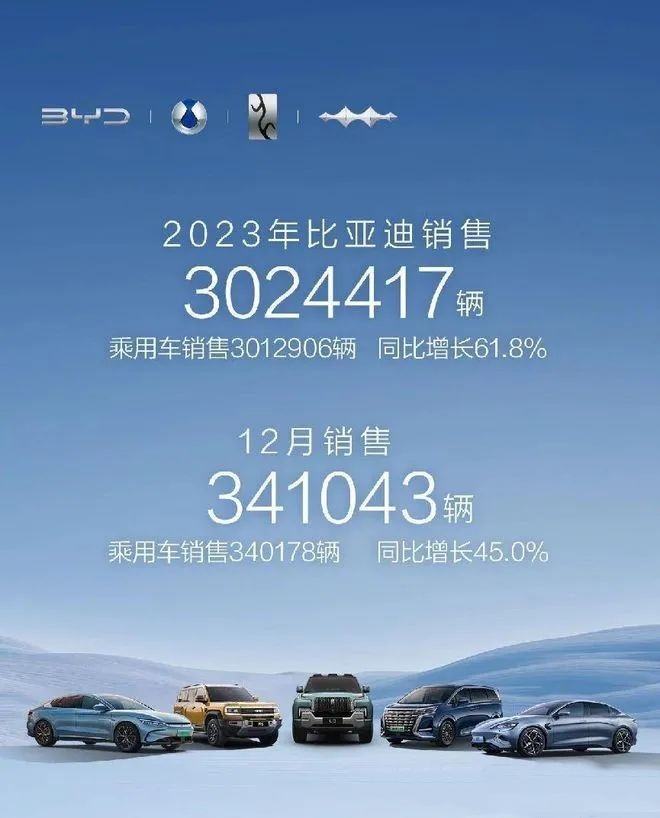
BYD has been almost unrivaled throughout 2023, surpassing its rivals by "a few streets". Its bicycle sales are far ahead of the major car companies, and its monthly sales are even equivalent to the annual sales of many car companies.
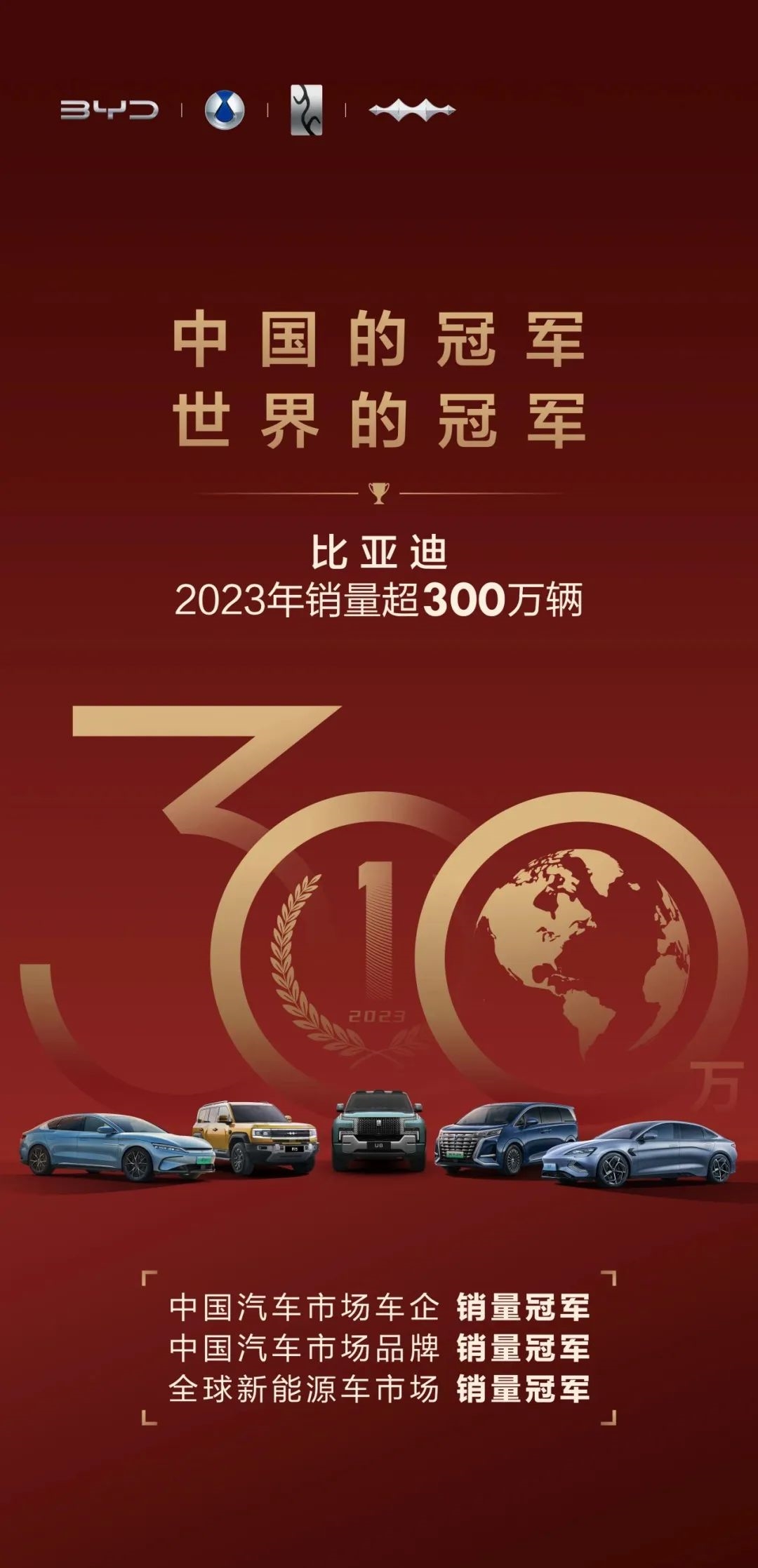
The story of climbing to the top is always fascinating because it has its own light.
2. Break the joint venture monopoly and refresh the history of China’s automobile industry
In the past, people always asked, "When will Chinese automobiles break the monopoly of joint ventures?" They were all waiting for the answer and looking for the answer. Dilemma and enthusiasm gave birth to new opportunities in this changing era, and BYD was the first to find the answer.
In the past three years, BYD has experienced rapid growth in sales. In 2021, annual sales exceeded 740,000 vehicles, in 2022, annual sales exceeded 1.86 million vehicles, and in 2023, annual sales exceeded 3.02 million vehicles. This growth rate is nothing short of miraculous. It not only refreshes the history of China's automobile industry, but is also unique in the global automobile market.
The past 40 years of China's auto market have been dominated by joint venture brands. However, as BYD took over, the sales champion in the Chinese market was taken back by a Chinese brand for the first time! The old era of joint venture monopoly has ended, and the new era of independent brands has begun. It took Volkswagen 32 years to reach 3 million annual sales in China, Toyota took 49 years to reach 3 million annual sales, and BYD only took 26 years from its establishment to reach 3 million annual sales. In contrast, BYD's growth rate is a reflection of its long-standing technical strength.

It is worth mentioning that BYD achieved a major milestone in the first half of 2023. This is not only a highlight moment for the BYD brand, but also a highlight moment for Chinese automobile brands. BYD's global new car sales in the first half of 2023 increased by 96% year-on-year to 1.25 million units, surpassing Mercedes-Benz and BMW in sales, and entering the top ten global car brand sales. This is also the first time in the 70 years of China's automobile industry that a Chinese brand has entered the top ten in the world rankings. Not only that, in Q3 last year BYD surpassed Suzuki and entered the top nine global car brands in sales. It is not easy for BYD, which is pure and has no joint ventures, so it is not an exaggeration to say that BYD is China's largest automobile group.
3. Continue to enrich the brand matrix and achieve great results
In the past year, BYD has continued to enrich its brand matrix, launched new models in various segments, and demonstrated its outstanding multi-brand layout capabilities to the new energy vehicle market.
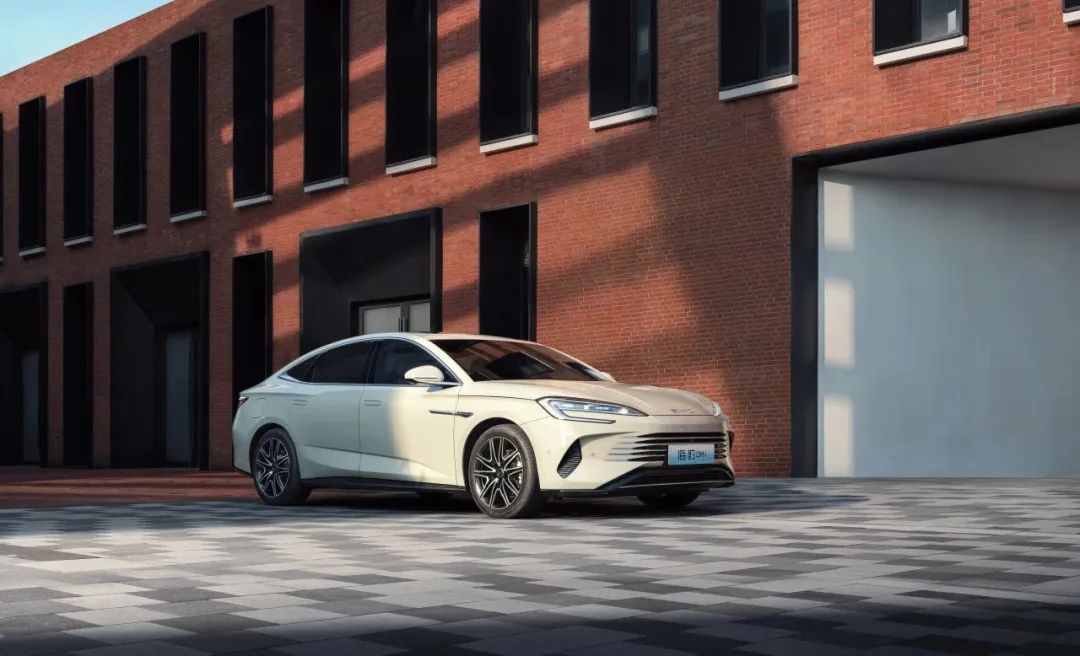
In terms of models, BYD's Dynasty Network Zhonghan and Tang are still the main sales drivers of high-end models. Monthly sales are around 35,000 vehicles. In addition to Han and Tang models, the three major brands of Denza, Fangbao and YangWang also shoulder the important task of BYD's brand to move up to the high-end. The sales volume of the Denza brand in December 2023 reached 11,929 vehicles, a year-on-year increase of 98.8%, and the sales volume for the whole year of 2023 also reached 127,840 vehicles. The Fangbao brand successfully entered the price range of more than 300,000 yuan with the Leopard 5 model, and its sales in December of the same year reached 5,086 vehicles. In addition, as the monthly sales volume of million-level new energy SUVs, YangWang U8 also reached 1,593 units in that month, becoming a "top hit" in the high-end new energy market.

The sales of high-end models such as Tang, Han, Denza, Fangbao and YangWang accounted for about 15% of BYD's monthly sales, which also shows that BYD, which is technology-oriented and innovation-oriented, has "broke" a new path of high-quality development, quality and Brand improvement is the "distance" that BYD pursues.
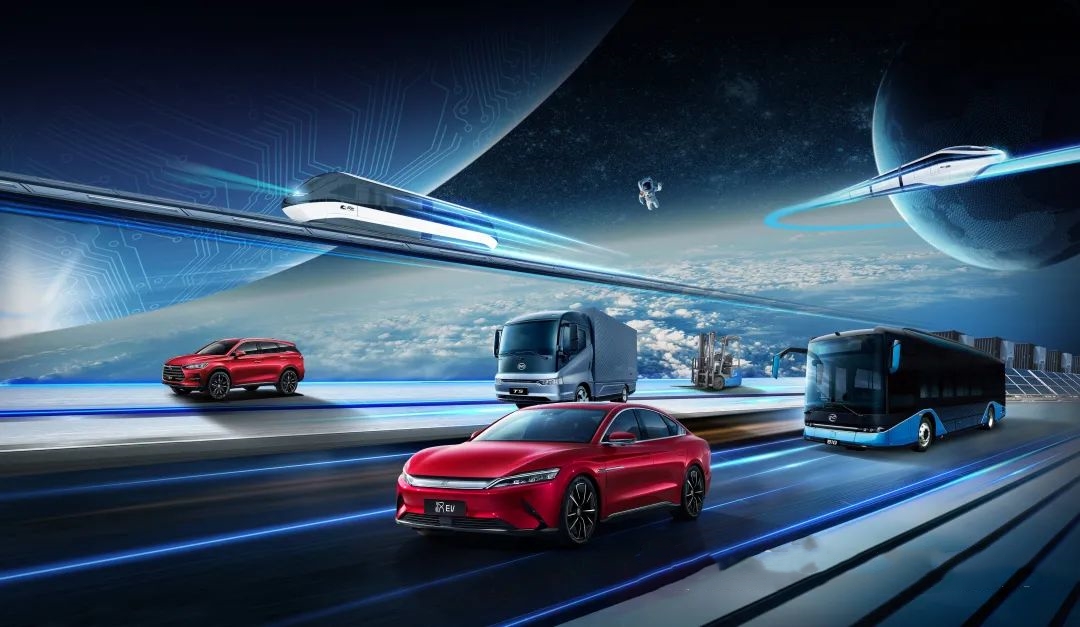
With the support of careful market layout and years of automobile manufacturing experience, BYD's passenger car business has formed a gradient layout composed of multiple brands such as Dynasty.com, Haiyang.com, Denza, YangWang and Fangbao. These brands cover various needs from household to luxury, mass to personalized, and meet users' car needs in different scenarios.
4. Continue to exert efforts, and new energy "top flow" will go overseas and "surge"
In recent years, as the demand for overseas new energy vehicles continues to grow, my country's overseas sales of new energy vehicles have increased significantly. This kind of blowout explosion is not accidental. It is mainly due to China's new energy vehicles having relatively outstanding technical advantages and industrial chain resilience in the fields of batteries, motors, electronic controls, etc., combined with domestic comprehensive manufacturing cost advantages and intelligent first-mover Advantages, showing strong competitiveness in overseas markets. When major automobile companies are facing the pressure of transformation, BYD New Energy Vehicles has occupied a place in the international market with unprecedented momentum.

Judging from the latest sales data, in December 2023, BYD sold approximately 36,100 vehicles overseas. In 2023, BYD's overseas sales exceeded 240,000 vehicles. It is reported that BYD's new energy passenger vehicles have entered 59 overseas countries and regions including Germany, Japan, France, Brazil, Australia, and the United Arab Emirates, and have successively won the sales championship in the new energy vehicle market in Thailand, Brazil and other places.

Not only that, BYD has also successively built factories in many places around the world. In July 2023, BYD announced that it would invest in the construction of three new factories in Brazil, with an annual production capacity of 150,000 vehicles. In September of the same year, Uzbekistan's state-controlled automobile group reached a cooperation with BYD and planned to establish a joint venture. In December, BYD announced the construction of a new energy vehicle production base in Szeged, Hungary. BYD's overseas growth is not only the pride of China's intelligent manufacturing, but also a model for Chinese enterprises to enter the international stage.

Part 5: Write at the end
The young BYD has become a leader in the global new energy vehicle industry with its outstanding performance and firm belief. BYD has gone from being the sales champion in China's new energy vehicle market to being the sales champion in the Chinese auto market, and then continuing to be the sales champion in the global new energy vehicle market. Today, BYD has entered the top ten in the world's automobile market. Once again, as "China's champion and world's champion", BYD has submitted a perfect answer to the development of the global new energy automobile industry. Their ambition and spirit of continuous innovation make us confident in the future of this young car company. Let us look forward to BYD bringing more surprises and breakthroughs to the global new energy vehicle industry in its future development.
The above is the full content of Wang Chuanfu's "BYD Dynasty", the "counterattack path" from low to high!







